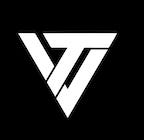The Ultimate Guide on Technical Recruiting — Part 1
This guide is meant to serve as just that. A guide. Feel free to jump around the different sections as it applies to your company’s stage and situation. The ultimate goal for this guide is to spark conversations and action change into pre-existing thoughts on one’s hiring philosophy, processes and best practices. This isn’t a 300 page book so yes, there are some finer details missing but overall, I think it does the trick. Plus it’s free so no complaining!
Whether you’re a founder, engineering manager or a fellow recruiter, I hope there’s something in here that you find useful.
Enjoy.
Part 1 — Philosophy & Planning
Part 2 — Process & Structure
Part 3 — Sourcing, Closing, Calibrating
SECTION 1: PHILOSOPHY & PLANNING
Let’s start with two high level pieces that will need to be carefully thought and planned out before we send any outreach messages out — headcount planning, leveling structure and compensation philosophy.
PRINCIPLES
How does your company values translate to the interviewing culture that you want to see? What expectations needs to be set from the get-go from the decision makers to the interviewers and everyone in-between?
Questions to consider:
- Transparency — How will the company stay transparent across the different org leaders, managers and recruiters with the roles that will need to be hired?
- Accountability — How will the company uphold their hiring bar as the team scales? What factors will decision makers prioritize when making hiring decisions?
- Communication & Feedback — How will leadership and interviewers bring up feedback to improve hiring processes?
- Bias — What needs to be emphasized in preventing bias during interviews and feedback? What general traits does the company look for, regardless of background?
This needs to come from the top, down and repeated both in company wide posts but also in the everyday interactions.
HEADCOUNT PLANNING
What: Cross collaboration effort between Finance, HR, Engineering and Recruiting to break down high level vision into priorities, headcount allocation across teams and setting practical hiring goals. Always a difficult balancing act between multiple times and different agendas that may take months to debate and decide.
Questions to consider:
- What’s our budget?
- How many heads can we practically hire?
- What are our product priorities
- What do you think you’ll need to build your team?
- How do you want to allocate those heads
- Setting expectations with Recruiting (and vice versa)
Helpful Tips:
- Start the conversation EARLY with finance.
- Encourage debate on what’s considered a priority and set deadlines on when decisions need to be made. The longer the lag, the longer it takes for hires to be made, the longer it takes to achieve the vision that’s been set.
- Communicate early and often with recruiting on what’s potentially to come. Building pipeline doesn’t come overnight!
- Executives — focus on vision and make decisions. In any hyper growing environment, leaders will need to learn how to disagree but commit to the wider vision.
- Slowly roll out headcount to recruiting as decisions are made
LEVELING / COMPENSATION
What: Establishing equitable career and financial guidelines for the team. Leveling and compensation often go hand and hand so it’s important that this is thoroughly discussed as leveling / compensation are often the number 1 factor why a candidate decides to join (and not join).
Questions to consider:
- How do we want to level? Why is important? How does it tie to our values?
- What can we take/learn from FAANG companies?
- How do we want title? Why is it important? How does it tie to our values?
- What are the expectations for each role, each level? Expectations can include — distance of impact, scope & ownership, autonomy, technical competence, etc.
- What is our compensation philosophy? Why do we structure it the way we do?
- What are the market rates for each level? What are the standard, min and max? How do we balance cash vs equity? How do we value cash and equity?
- What are typical growth paths? More companies have adopted separate IC vs Management track, do we want to do the same?
Helpful Tips:
- Invest the time and energy to get this right. This will be the guiding post as the team grows and will come up time and time again in hiring decisions
- Be transparent on what the expectations are. This should not be a surprise or mystery to potential and current employees. People will talk, word will get out and culture will be harmed if it’s done in secrecy. Set your future managers up for success.
- Be flexible, but principled. As hiring scales, you may find that your needs and expectations will change. Tweak, don’t overhaul.
- Make objective, data-centered compensation decisions. (Objective could be years of experience, interview performance, specialized skill or background, etc).
- Capture every competing offer package number and benchmark accordingly
- Capture offer declines as it relates to leveling/comp and build up case if needed
Resources — Everything you need to know on Job Titles & Levels. This is a must-read from the Holloway team.
Up next, we’ll be diving into the meaty part of the recruiting process. Job descriptions, interview format, onsites and much more!
Check out Part 2 here.
